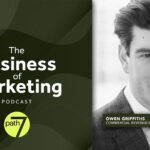By Manfred Abraham, CEO of Yonder
Pride Month is always a topic for debate when brands are setting out their yearly marketing strategy. It’s a campaign that—admittedly—takes meticulous planning to truly get right. Fail to pay due diligence, and when June comes around you’re left slapping a rainbow logo on your standard products and hoping for the best.
A skim through the years reveals plenty of faux pas in this department. And when you strip down the reason for the failure, the same factors crop up time and again: the brands have either treated Pride as a gimmick or have focused on winning marketing awards or getting applause for their campaigns at the expense of truly connecting with LGBTQ+ consumers and their allies.
But I’m not here to recap recent mistakes made by brands in their Pride or LGBTQ-focused campaigns. There are plenty of pieces out there about everything from Bud Light’s collaboration with influencer Dylan Mulvaney to British retailer M&S’s LGBT sandwich (as in lettuce, guacamole, bacon, and tomato). Despite the campaigns’ good intentions, the planning phases undoubtedly overlooked some crucial factors from which we can learn.
Bottom line: Getting your Pride Month campaign wrong is worse than doing nothing at all.
If, as a brand, you have decided to proceed with the planning phase of your Pride campaign, there’s a golden thread that runs throughout successful efforts. Take H&M’s 2021 ‘Beyond the Rainbow’ campaign. Yes, the $100,000 donation the brand made to the United Nations Free & Equal Campaign will have done a lot for a marginalized community. But the real takeaway was that it provided a platform for people to tell their own personal stories.
H&M recognized that it wasn’t about selling special, limited-time products. Rather, it was going deeper and focussing on Pride’s impact and what it means to those in the community. The brand put revenue aside and invested its time into forging meaningful connections that go beyond the month itself.
Today’s audiences are more perceptive than ever. They can spot ‘rainbow washing’ and ‘Pride-for-profit’ campaigns from a mile away. Understandably, brands consider themselves between a rock and a hard place. Even if they set out with the best of intentions, one wrong move — namely, forgetting to keep the LGBTQ+ audience at the heart of their campaign — and they can quickly find themselves on the receiving end of critical public backlash.
But that doesn’t mean that you should stand down in the face of adversity. Just ask The North Face, which came under fire for its collaboration with drag queen Pattie Gonia in the ‘Summer of Pride’ campaign. Accused of “sexually targeting children”, the clothes retailer didn’t fold. It doubled down in its stance, saying that “we stand with those who support our vision for a more inclusive outdoor industry.”
So, what’s the solution?
It may sound simple, but actually listening to the community you’re trying to connect with can go a long way. In Pride’s case, this means being proactive, seeking out members of the community and giving them the space to be heard.
Instead of crafting a marketing strategy around your own opinions or perceptions, the onus is on you to gather insights from the people that truly matter, and then put those into action. Engaging in open discussions is the first step to learning about the support that they actually want—not just the assistance that you think you should be providing.
Without collecting data and opinions from people in the community you are trying to connect with, you are just guessing. Sure, you may get at least some of what that community is looking for right, but nothing will be as impactful for your campaign as true insights from them.
You wouldn’t blindly release a new product or service without doing ample research into what your consumers truly want. If you tried to come up with a new product just because a lot of other companies are coming out with something new, that product would fail miserably. You should treat your Pride campaigns the same way.
In order to be successful this June, you must build an authentic connection between you and your consumers. Do your research, listen to the community and find out what they need, and then make a decision about taking actions and how to support them.
Otherwise, sit this one out.
The most crucial aspect of a Pride campaign is the genuine desire to connect, support and elevate the community. When your audience reflects on your campaign, they won’t remember the amazing production or design that went behind it—they will remember the real-life impact it had on the community it was designed to support.






